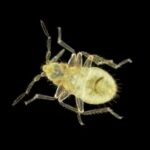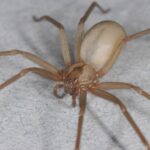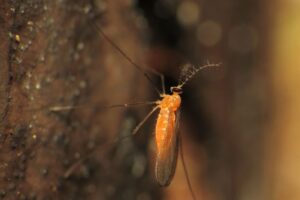Those white, salt-like grains in your bed might be bugs, but what kind precisely? In this article, you’ll find a list of white bedbugs that might fit the description and tips on how to get rid of them from your bed and home.
One possible culprit is spider mites or white mites. These are small and white or clear bugs that usually look like grains of salt or sugar. They’re known for infesting outdoor plants, but they can also infest homes. You can find them in house furnishings, bed linen, carpets, and curtains.
In this article, we will look at the following possible white, salt-like grains in your bed:
- Bed Bug Eggshells
- White Mites
- Empty Nits
- Bird Mites
- Clothes Moth Eggs
Read on to learn more about white salt-like grain mites and other bugs, which might be responsible for those white, salt-like grains in your bed.
5 Small White Bugs That Look Like Salt Grains
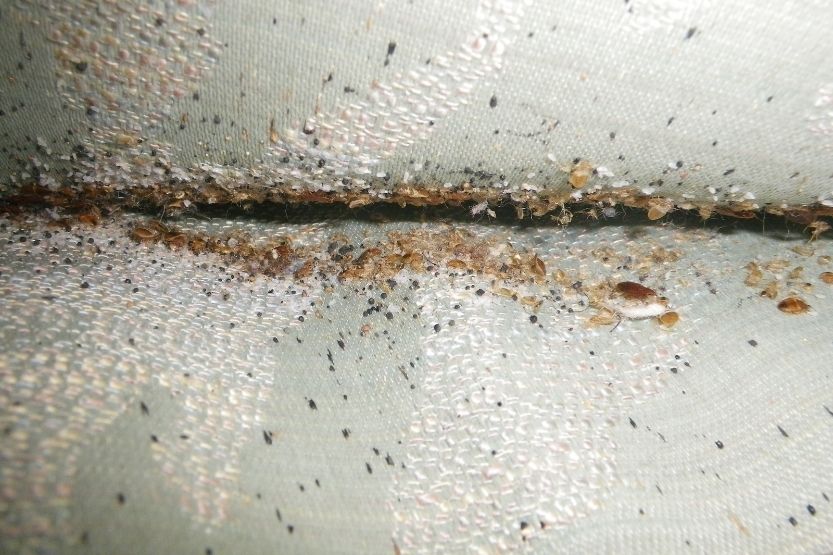
1. Bed Bugs
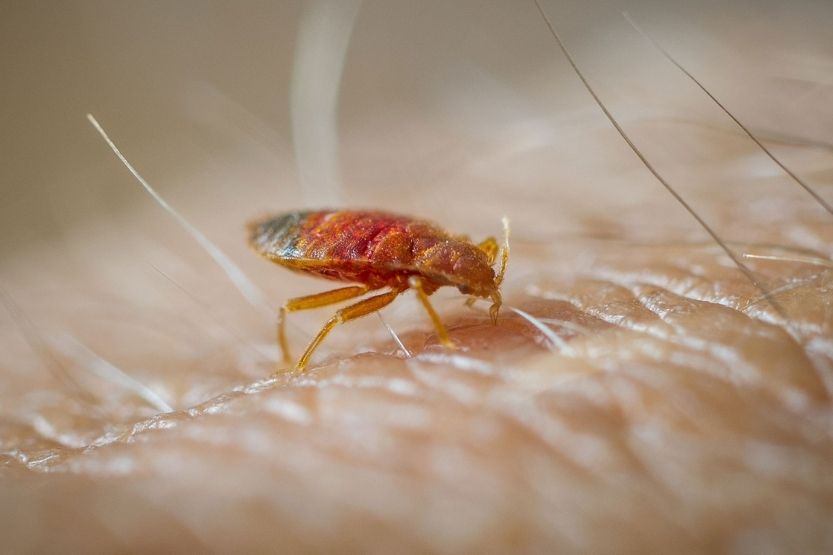
Flat and Oval
Those white, salt-like grains in your bed are most likely bed bugs or their eggshells. Adult bed bugs, Cimex lectularius, could grow to measure 4 to 5 millimeters in length and 1.5 to 3 millimeters in width. They’re flat and oval.
Usually Reddish Brown
Bed bugs are usually reddish-brown, but they can turn red or dark purple after feeding. Their eggs have a white or pearl-white color and are often shaped like a grain of salt or a pinhead.
Live up to a Year or Longer
They might be small, but they’re clever and tough. They can live up to a year or longer, even if they don’t feed during that period. Worse, they multiply fast. Every time they feed and mate, each adult female bed bug can lay up to 150 eggs or 500 eggs in its lifetime.
Would Bed Bugs Be on a Window Sill?
2. White Mites

Extremely Small
Another possible white, salt-like bug is a white mite. White mites, specifically the two-spotted spider mites, are even white. Despite being extremely small (0.5 millimeters long when adults), they’re still visible. Just look for the cobweb-like, silken thread they leave behind.
Outdoor Bugs
They’re outdoor bugs. But if they find their way indoors, you’ll most likely find them in these places:
- Bed linens,
- Carpets,
- House furnishings, and
- Damp areas (Note: They’re attracted to moisture).
How to Get Rid of White Mites
To get rid of them, you’ll also have to take out and wash all items in your home that they can hide and multiply. Vacuuming and using pesticides are also effective remedies.
Check your garden plants. If these bugs infest them, remove them.
What Causes Mites in the Kitchen?
3. Empty Nits
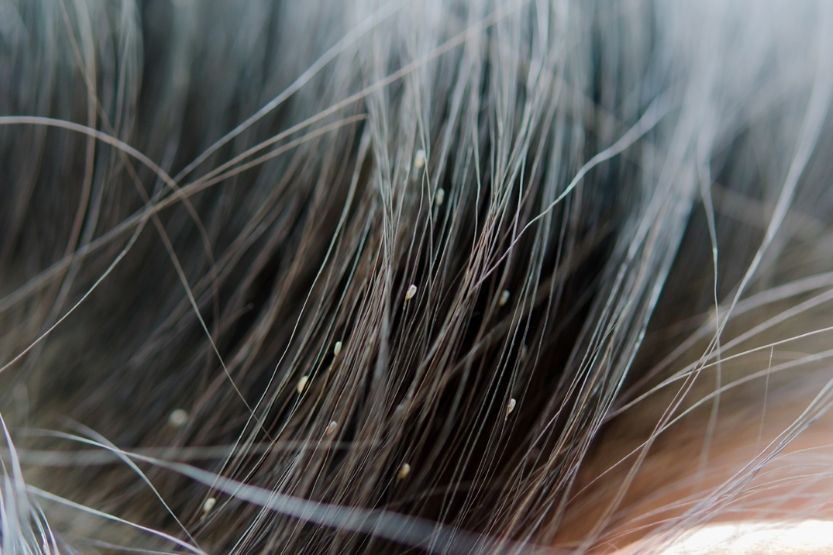
Oval-shaped Eggs of Female Lice
Nits, or the oval-shaped eggs of female lice, measure 0.8 to 0.3 millimeters. If they’re clear or white and salt-like, chances are the lice have already hatched (one to two weeks after they’re laid), and the egg cases remain to the hair shaft. These cases are white.
Don’t Easily Fall Off from Hair
But fortunately, or unfortunately, the nits don’t easily fall off like dandruff. Even if they’re already empty, the empty shell remains attached to your hair as your hair grows.
4. Bird Mites
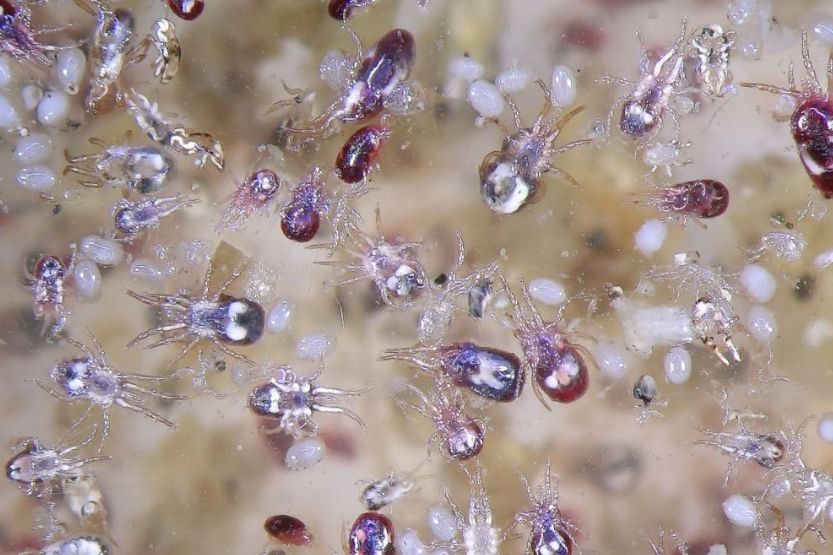
White or Bright Red
The color of bird mites will depend on whether they’ve eaten or not. Before feeding, they’re color white or somewhat semitransparent. When they’re done feeding, they’re bright red to grayish.
Like bed bugs, bird mites will infest anything made of fabric such as the following:
- Bedding,
- Carpets,
- Clothes, and
- Upholstered furnishings.
When they’re inactive, they’ll hide in cool, dark places, such as cracks and crevices.
Hire a Pest Control Company
The best way to get rid of bird mites is to hire a pest control company. If you decide to do it yourself, you can use insecticides containing the following:
- Permethrin,
- Beta-cyfluthrin, or
- Deltamethrin.
After vacuuming, be sure to seal the bag (if your vacuum uses one) then place it inside the freezer. Get rid of all empty nests or dead birds to prevent re-infestation.
5. Clothes Moths Eggs

Adult Webbing Clothes Can Live up to 21 Days
The webbing clothes moth is known to infest homes out of all the moth species. Adult webbing clothes moths can live up to 21 days (female) or 37 days (male). The larvae and pupa of these insects can survive for months, even without food. This makes it difficult to contain and eliminate them.
Regularly Clean Your Home
One of the initial steps to avoid an infestation from this insect species is to clean your home regularly. Enclosing infested items inside a sealed plastic bag and heating them for around half an hour at temperatures over 120°F (48.9°C) could help kill them. You can also freeze (below 18°F) them for a couple of days.
Are Small White Worms Harmful?
More on Bed Bugs
The most probable cause of the white salt-like grains is the bed bug eggshells. So to get rid of bed bugs, follow the below steps:
Hiding Places
One of the most common ways bed bugs get inside your home is through the following:
- Clothes,
- Luggage bag,
- Wheeled luggage, and
- Travel accessories.
Once inside your home, they’ll initially hide in the following:
- Bed frames,
- Box springs,
- Couches,
- Headboards,
- Mattresses, and
- Other furnishings where they have easy access to their food source—fresh blood.
Unlike bees or termites, they don’t have nests, although they’re known to live in groups. They’re so small that they could easily hide in small items and tight spaces with the same width as a credit card or a toothpick.
They’ll usually lay their eggs behind wallpapers and cracks in walls. If you see white, salt-like grains in your bed, they may be bed bug eggshells.
Signs of Infestation
To make it clear—the presence of bed bugs doesn’t automatically mean your home is filthy. It’s not uncommon to find these pests in hotel rooms and other regularly and thoroughly cleaned homes.
Bed bugs are nocturnal. And it’s during nighttime; they feed by biting people while they’re sleeping. Their feeding time usually lasts from three to ten minutes. So, if you wake up with itchy, small, and red bumps with a clear or dark center, you might be dealing with these bugs.
Other signs of bed bug infestation include:
- Blood stains on your bedding (e.g., bed sheets, blankets, and pillows)
- Specks of bed bug feces, which could be dark or rusty in color.
- Berry-like, a musty smell which isn’t easy to detect, unless you’re dealing with a large infestation.
- Presence of their eggshells or molted skins (usually white and salt-like or translucent)
Factors That Affect the Amount of Time Needed to Get Rid of Bed Bugs
Getting rid of bed bugs is a long, tedious process. It won’t be surprised if it takes at least 28 to 42 days to complete the job. The amount of time that’s needed to get rid of them will depend on several factors, such as:
- Method you choose for killing them
- Extent of the infestation
- Manner of preparing the infested area(s) for treatment
- Person carrying out the treatment
- Thoroughness of the treatment
Warning: Bed bugs are notoriously difficult to eliminate. That’s why it might take two or more treatment sessions to complete the entire process.
Why Is It Difficult to Eliminate Bed Bugs
1. Good at Hiding
Because of their size and cleverness, it’s easy for them to gather in tight spaces, like cracks in walls or joints in your bedside tables, where you can’t easily see or reach them.
They’re also prone to wandering because they don’t have a permanent nest. They gather and hide where they can be near people and pets.
2. Multiply Fast
Depending on the availability of its meal, a healthy female bed bug could lay more than a hundred eggs. The eggs will hatch within six to ten days. Under ideal conditions, the population size of bed bugs could double every 16 days.
3. Activity and Behavior
Bed bugs only come out at night to feed every three to seven days if they have access to their blood meals. When coupled with how fast they multiply and how good they are at hiding, it makes them a pest that’s difficult to get rid of.
4. Resistance to Chemical Pesticides
Most experts agree that it’s getting difficult to get rid of bed bugs because they’ve developed resistance to pyrethroids. The major advantage of using this class of fast-acting chemicals is you only need to use low doses to exterminate insects. Also, it’s generally safe for people and pets.
How to Eliminate Bed Bugs
Now, let’s go through each step of eliminating bed bugs:
1. Identify the Bed Bug’s Hiding Spots
Identify their favorite hiding spots. Do this before they reproduce like crazy, which is more expensive and challenging to treat than a small infestation.
You can do this first step yourself or let a professional do it for you. Aside from being knowledgeable, some of these pest control professionals have dogs trained to find bed bugs by scent.
2. Prepare Your Home Before the Pest Control Appointment
It’s your responsibility to prepare your home while waiting for your pest control treatment appointment. Prepping won’t eliminate a bed bug infestation, but it can increase your chances of success.
When preparing your home, keep these things in mind:
- Make sure your family and pets are out of your home during the visit.
- Vacuum all areas of your home that are possibly infested by bed bugs. Make sure you vacuum your baseboards, bed seams, and all cracks. Once you’re done using it, put it immediately inside a tightly sealed plastic bag. Leave it outside your home for a couple of days because it could now be infested by the bed bugs and their eggs.
- Seal off all cracks and other open areas, including electrical outlets.
- Beds should be a few inches (around 6 inches) away from the wall to prevent bed bugs from climbing on.
- Place all items that bed bugs could use as a hiding place (e.g., books and clothes) inside a sealed plastic bag. Never move items from an infested room to other clean rooms to prevent spreading the bugs. Then, throw all of the items out.
- Wash bed sheets, blankets, clothes, linens, pet beds, pillows, pillowcases, stuffed animals, towels, and other items made of fabric in hot water. Next, put them in the dryer for 30 minutes to one hour.
- If you have belongings, such as shoes, which you can’t put in the washing machine, you can put them in the dryer in the hottest setting.
- If you want to do the job faster, use a professional steamer. It’s important to maintain the heat level at 160°F to 180°F for every square inch of the surface. Don’t use it on electrical outlets!
- Spend time deep cleaning your mattress. First, scrub the seams using a stiff brush to loosen the eggs and shells of the bed bugs. Next, vacuum all sides of your mattress then put it inside a tightly sealed mattress case. Leave it sealed for at least 12 months.
3. Exterminate
There are two popular methods for eliminating bed bugs:
Heat Treatment
Bed bugs respond well to heat. Therefore, some experts believe that it’s an effective tool for luring them from their hiding spots.
Heat treatment also offers a faster way of getting rid of bed bugs without residual effects. It usually takes only around eight hours to complete if you hire a licensed pest control company (recommended).
This method requires professionals to heat the room between 135°F (57.2°C) and 145°F (62.7°C). But at 122°F (50°C), bed bugs, including their eggs, usually die instantly.
The downside of heat treatment is there’s a possibility it could destroy your electronic devices and other sensitive items in your home. And if the person carrying it out doesn’t use the bed bug-lethal temperature, the treatment will most likely fail.
Chemical Treatment
If you want a cheaper alternative to heat treatment, pesticide-based treatment is a good option. The downside of this type of treatment is it doesn’t produce fast results.
There are currently hundreds (around 300) of EPA-approved pesticide products on the market. Most of them contain pyrethrins and pyrethroids, two of the most common compounds used for managing and killing bed bugs.
Before you choose this type of bed bug treatment, here are a few considerations to keep in mind:
- Mistakes are costly: You’ll end up buying and applying more pesticides to infested items and areas of your home than if you hired a pest control company.
- Re-infestation: Bed bugs will usually scatter and invade nearby rooms to get away from the pesticide spray. Re-infestation is most likely going to happen, so you can expect to re-apply pesticides or switch to a different method for long-term management of bed bugs.
- Harmful: Pesticides can be harmful to animals and humans. They can cause breathing difficulty, dizziness, headache, nausea, and vomiting. Be sure everyone in your home or office are aware of the treatment plan, so they can avoid exposure to bed bug pesticide.
4. Prevention
Heat and chemical treatments are effective, depending on the severity of the infestation and experience of the person carrying out the treatment. But to completely get rid of these bugs and prevent re-infestation, you need to be proactive.
- Perform regular inspections, at least every week, to ensure no bed bugs and their eggs remain.
- Continue the treatment at least every seven or ten days until there are no longer signs of bed bug infestation.
- Schedule regular inspections (usually quarterly) with a trusted pest control company. They can perform a deeper inspection and take care of the bed bugs and other pests if necessary.
How to Get Rid of Black and White Ladybugs in Your House
Conclusion – White Salt-Like Grains in Bed
Five reasons for the white, salt-like grains in your bed are as follows:
- Bed Bug Eggshells
- White Mites
- Empty Nits
- Bird Mites
- Clothes Moth Eggs
It can be tricky to figure out what those white, salt-like grains in your bed are. If you suspect you’re dealing with an infestation of any invasive bug species, schedule an appointment with a trusted pest control company. Incorrect identification and treatment aren’t just expensive, but it’s also time-consuming and can result in frequent re-infestation.
Read next:



